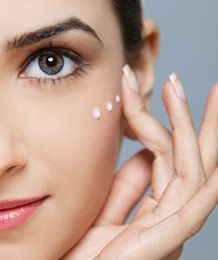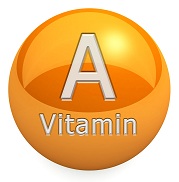Wrinkle fighting benefits without sensitivity or irritation
When it comes to fighting signs of aging, particularly wrinkles, Retinol has been one of the biggest breakthroughs in the world of dermatology. Retinol is very effective at exfoliating the skin and promoting the development of new healthy cells and collagen.

Prescription-strength amounts can be very effective, but they aren’t for everyone. In fact, retinol in some cases is so powerful that even the amount found in many commercial products can be too much for people with sensitive skin, leaving them with irritation and redness rather than a smooth, youthful texture.
So are people with sensitive skin, or people who just want to choose a safer, more natural option doomed to miss out on the benefits of this great ingredient? Not at all! They have better options, and here’s why…
Retinol is actually a form of Vitamin A
 But Vitamin A itself doesn’t have much of an effect on skin. Instead, its active metabolite form, retinoic acid, is what does the heavy lifting. Retinoic acid is the active ingredient found in Retin A. This can be too harsh for many people with sensitive skin. And even people who do tolerate it fairly well typically shouldn’t use it on a daily basis.
But Vitamin A itself doesn’t have much of an effect on skin. Instead, its active metabolite form, retinoic acid, is what does the heavy lifting. Retinoic acid is the active ingredient found in Retin A. This can be too harsh for many people with sensitive skin. And even people who do tolerate it fairly well typically shouldn’t use it on a daily basis.
There is a metabolic pathway that leads to retinoic acid. It looks something like this:
retinyl palmitate > retinol > retinaldehyde > retinoic acid.
The earlier a product is on the pathway, the gentler on the skin. More of it may be needed to get to the end goal of retinoic acid, since much is lost in the conversion process.
But the earlier these metabolites are on the pathway, the gentler they are on your skin. True, you may have to use more of them to see an effect, but that’s certainly a better option than swearing off retinol altogether or facing a consequence that you wish you had avoided.
